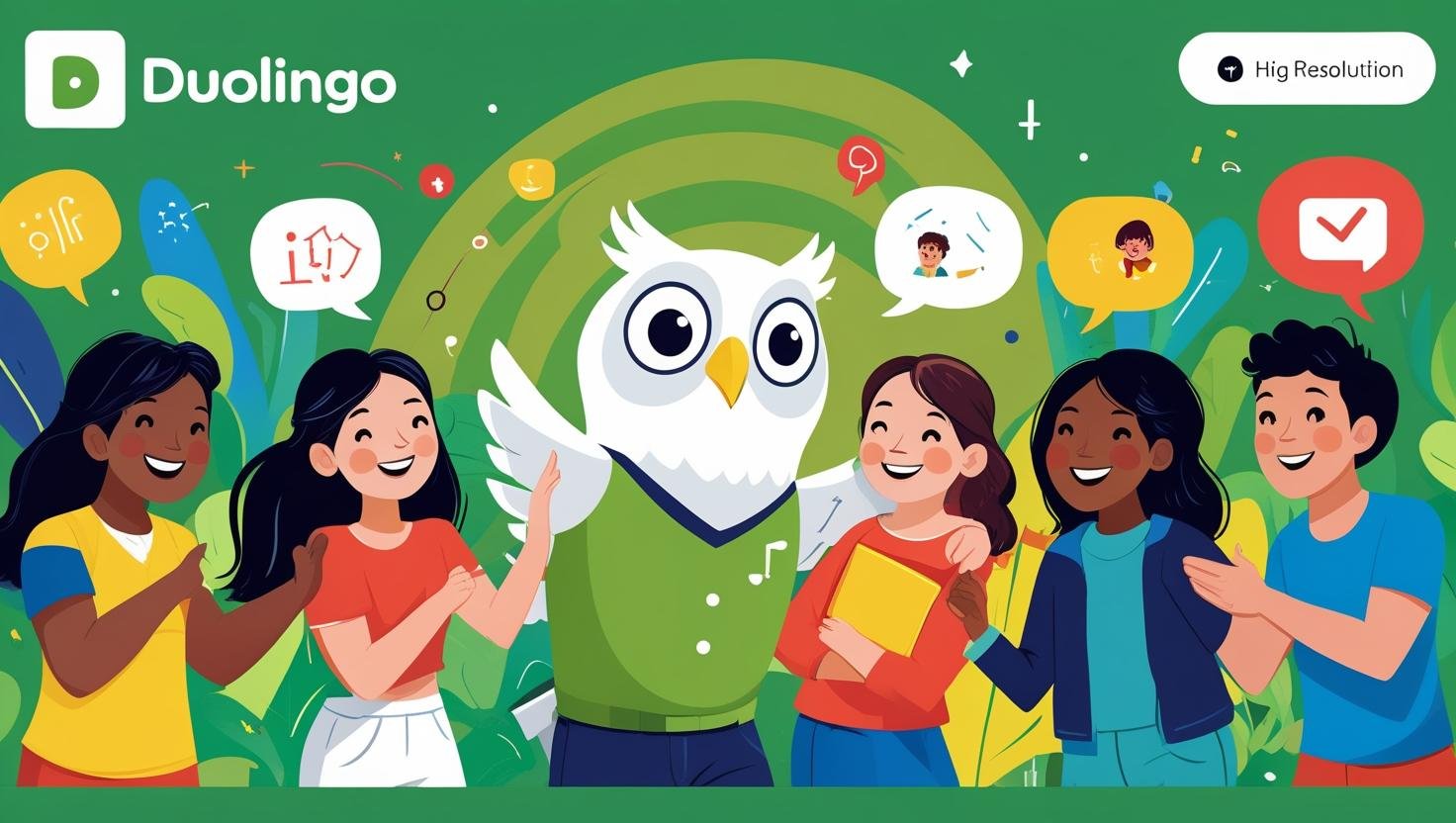Duolingo isn’t just another language app, it’s a masterclass in innovative and captivating marketing. Famous for its playful mascot, Duo the owl, Duolingo Marketing Strategies has carved out a unique space by turning language learning into a game-like experience. Central to its strategy is gamification: rewards, streaks, and leaderboards keep users motivated, transforming education into entertainment.
The Importance of Marketing in Language Learning
Marketing isn’t just about selling products it’s about sparking curiosity, excitement, and lifelong passions. In the realm of language learning, effective marketing transforms daunting educational tasks into engaging and rewarding experiences.
By showcasing language skills as fun, accessible, and socially valuable, creative marketing campaigns break down psychological barriers that prevent learners from getting started.
Language-learning brands like Duolingo, Babbel, and Rosetta Stone thrive because they use powerful storytelling, gamification, and personalized messaging to appeal to diverse learners.
Marketing also plays a vital role in keeping users motivated by celebrating progress and fostering community. Smart strategies remind learners why they started and inspire them to continue their journey.
Ultimately, marketing in language learning isn’t merely promotional, it’s motivational.
It humanizes the learning experience, builds confidence, and encourages consistent practice, proving that good marketing can genuinely enrich lives by opening doors to new cultures, opportunities, and personal growth.
Key Components of Duolingo’s Marketing Strategy
Duolingo’s marketing success isn’t accidental; it’s built on a clever mix of creativity, personalization, and humour. At its core is gamification, transforming language lessons into an addictive, game-like experience filled with rewards, leaderboards, and friendly competition.
This approach not only hooks users but keeps them coming back daily. Social media mastery is another hallmark of Duolingo. Their mascot, Duo the Owl, stars in playful, often hilarious posts that leverage trending topics, memes, and relatable scenarios.
This bold, personality-driven content makes Duolingo instantly shareable and widely beloved.
Data-driven personalization is also essential. Duolingo tailors’ ads and messaging based on user behaviour, language goals, and progress, enhancing engagement by making each interaction feel genuinely personal.
Lastly, impactful storytelling and collaborations boost their visibility. Duolingo partners with influencers, cultural figures, and brands, expanding their reach and credibility.
Altogether, these strategies create a uniquely engaging brand experience, ensuring Duolingo remains a language-learning leader.
Understanding Duolingo’s Target Audience
Duolingo knows exactly who it’s speaking to: tech-savvy, curious learners eager for an accessible, enjoyable way to pick up a new language. This audience primarily includes young adults, students, and busy professionals who value convenience, flexibility, and a bit of fun in their learning journey.
They’re smartphone natives, comfortable navigating apps and online communities, and prefer bite-sized content that fits their fast-paced lifestyles.
Moreover, Duolingo attracts globally-minded individuals interested in travel, culture, and personal growth, eager to expand their horizons through language. Many users are motivated by professional development or academic goals, seeking language proficiency for career advancement or study abroad opportunities.
Understanding this audience’s preferences, Duolingo crafts marketing messages infused with humour, creativity, and cultural relevance. This strategy ensures that learning never feels tedious instead, it becomes engaging, social, and addictive.
By precisely knowing its audience, Duolingo transforms casual learners into loyal fans and enthusiastic ambassadors.
Innovative Marketing Tactics Used by Duolingo
Duolingo doesn’t just market it entertains, engages, and enchants. Known for bold creativity, the brand’s marketing playbook is filled with innovative tactics.
First up is their vibrant social media presence, where Duo, the playful green owl mascot, has become a viral sensation, featuring in memes, playful banter, and quirky videos. Duo’s humorous and often mischievous personality makes the brand instantly relatable and shareable.
Gamification is another groundbreaking tactic, transforming mundane language exercises into compelling daily habits with rewards, streaks, and playful competitions. This turns casual users into committed learners.
Additionally, Duolingo harnesses partnerships and cultural trends masterfully, collaborating with celebrities, influencers, and popular TV shows to stay relevant and trendy.
Data-driven personalization also sets Duolingo apart, tailoring marketing messages precisely to user interests and goals, creating a personalized learning journey.
These fresh, inventive approaches elevate Duolingo beyond a language app, turning it into a beloved global brand.
The Role of Gamification in Duolingo’s Success
Gamification isn’t just part of Duolingo’s strategy, it’s the heart and soul of their incredible success. By transforming language learning into a vibrant, game-like experience, Duolingo turns mundane lessons into addictive daily challenges.
Points, badges, streaks, and leaderboards aren’t just fun; they offer immediate rewards and tangible achievements, motivating users to return day after day.
This approach taps into human psychology, triggering positive feelings of accomplishment and friendly competition.
Users aren’t just learning, they’re levelling up, earning rewards, and maintaining streaks, reinforcing learning as enjoyable rather than a chore.
Gamification also encourages social sharing, with friends competing and celebrating progress together, further deepening user engagement.
Ultimately, Duolingo’s gamified experience not only captures attention but also builds lasting habits.
By understanding what keeps users excited and motivated, Duolingo transforms casual learners into dedicated language enthusiasts, ensuring sustained success and impressive user loyalty.
Social Media and Community Engagement Strategies
Duolingo doesn’t just have followers it has passionate fans, thanks to its brilliant social media and community engagement strategies. At the heart is Duo, their iconic owl mascot, whose witty personality turns routine language tips into relatable, meme-worthy moments.
By embracing humour and internet culture, Duolingo creates content that’s not only informative but irresistibly shareable.
But the brand’s strategy goes deeper. Duolingo actively encourages user-generated content, sparking real conversations and building a supportive community of learners who cheer each other on.
Interactive polls, challenges, and real-time responses make followers feel seen, valued, and directly connected to the brand.
Additionally, Duolingo strategically partners with influencers and creators who resonate with their diverse, global audience. This ensures authentic engagement and widespread reach.
Ultimately, Duolingo’s dynamic blend of humour, responsiveness, and community-building turns social media from mere marketing channels into vibrant hubs of interaction, loyalty, and genuine enthusiasm.
Analyzing Duolingo’s Brand Partnerships and Collaborations
Duolingo thrives not just by innovation, but also through strategic partnerships and savvy collaborations. These alliances elevate brand visibility, credibility, and engagement, making the app more appealing to diverse audiences globally.
Here are key elements of Duolingo’s partnerships:
- Influencer Collaborations: Duolingo frequently teams up with popular influencers and content creators who showcase the app’s effectiveness and fun through authentic storytelling.
- Entertainment Tie-ins: Strategic collaborations with popular media franchises (like movies or TV series) and celebrities generate excitement, encourage user interaction, and significantly expand the app’s reach.
- Educational Partnerships: By partnering with schools, universities, and educational nonprofits, Duolingo reinforces its image as a credible, effective educational tool.
- Brand Cross-Promotions: Duolingo teams up with other brands offering complementary products or services, creating mutually beneficial promotional opportunities.
These partnerships and collaborations have been critical to Duolingo’s success. By aligning with trusted voices, popular culture, and reputable institutions, Duolingo effectively positions itself as a reliable, trendy, and essential resource for language learners everywhere.
Measuring the Success of Duolingo’s Marketing Efforts
Duolingo doesn’t just launch marketing campaigns it meticulously measures their impact, turning data into strategic magic. Success for Duolingo isn’t solely about downloads or revenue; it’s about engagement, retention, and community-building.
They track metrics like daily active users (DAU), session duration, and lesson completion rates to understand exactly how deeply users interact with the app.
Social media analytics play a starring role, providing insights through shares, likes, comments, and viral reach.
Duolingo closely watches user-generated content and influencer mentions to gauge brand popularity and sentiment, ensuring that their messages resonate authentically.
Additionally, the company employs sophisticated A/B testing, experimenting with content variations to discover what messaging, visuals, and incentives truly captivate their audience.
Conversion rates from ads and partnerships offer precise feedback about their promotional effectiveness.
Ultimately, by combining deep analytics with genuine audience understanding, Duolingo continually refines its strategies proving that smart measurement is the backbone of impactful, memorable marketing.
Conclusion
Duolingo’s marketing success lies in its ability to blend fun, simplicity, and smart strategy. By using gamification, bold social media tactics, and a relatable brand voice, it transforms language learning into a daily habit. Its focus on user engagement, data-driven decisions, and community building offers a clear lesson: modern marketing isn’t just about selling, it’s about creating experiences people want to return to.

